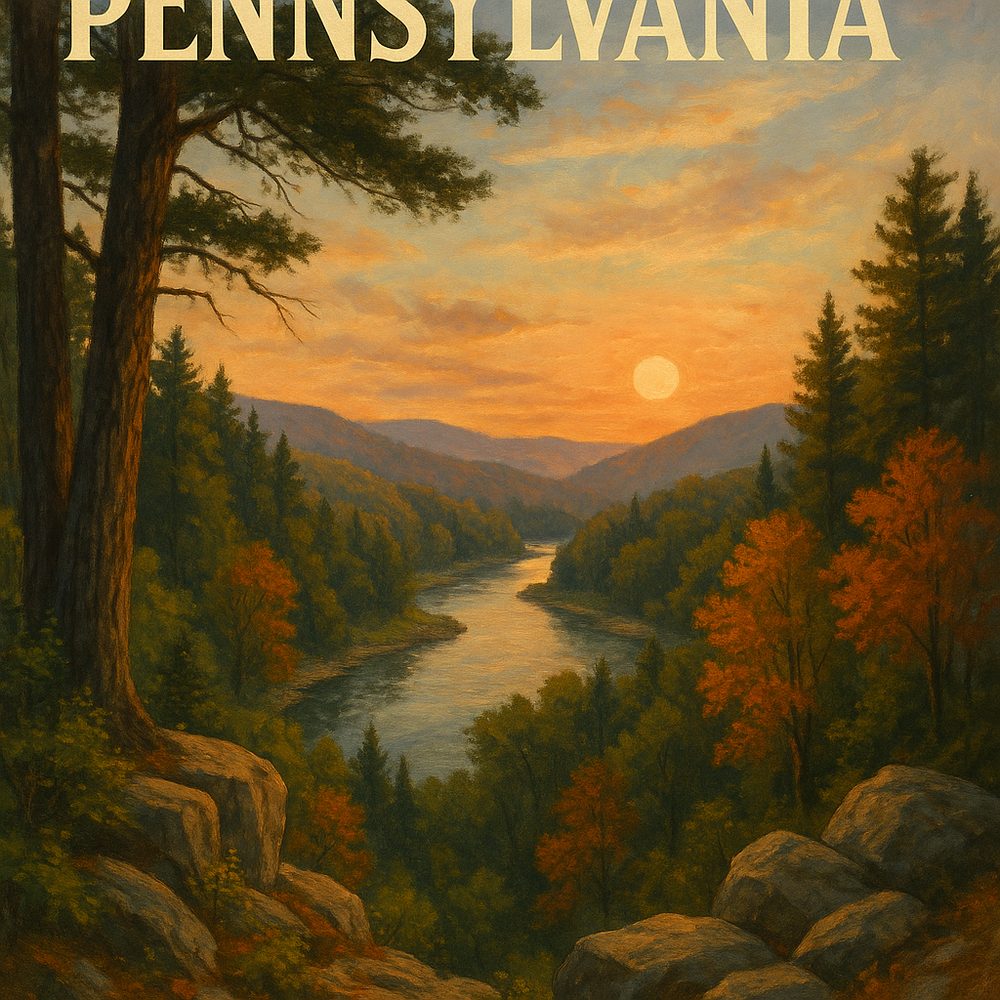The Architecture Lover’s Guide to Pennsylvania

Philadelphia, about two hours east of Pittsburgh, offers an architectural feast at the Philadelphia Museum of Art. Beyond its world-famous collection of paintings and sculptures, the building itself is a masterpiece of neoclassical design, inspired by ancient Greek temples. Visitors can admire the grand stairway immortalized in the “Rocky” films, which leads to massive columns and pediments. The museum’s imposing facade and its position on elevated ground provide sweeping views of the Benjamin Franklin Parkway and the city skyline. Spring and fall offer the best light and mild weather for exploring the outdoor parts of the site and nearby Fairmount Park, making it a perfect time to soak in both art and architecture.
Travel about 30 miles northwest of Pittsburgh to the Fallingwater house in Mill Run. Designed by Frank Lloyd Wright, this iconic home is perched dramatically over a waterfall, blending organic architecture with the natural landscape. Visitors can take guided tours through the concrete terraces and cantilevered balconies that seem to float above the rushing water. Its unique integration with the forest and stream makes it one of the most celebrated architectural landmarks in the country. Early autumn is particularly magical here when the surrounding trees blaze with color, enhancing Wright’s vision of harmony between human habitation and nature.
In Lancaster, roughly an hour and a half west of Philadelphia, the Central Market building stands as a vibrant example of 19th-century urban architecture combined with lively marketplace culture. The high timber roof and expansive open hall showcase the market’s original design intent while housing a thriving community of vendors. Exploring this space gives a sense of how architecture supports communal life, with natural light filtering through large windows and the sounds of bustling trade filling the air. Visiting on a Saturday morning allows you to experience the market at its liveliest, surrounded by fresh produce, handmade crafts, and the rich cultural tapestry of Pennsylvania Dutch traditions.
Head to Harrisburg, the state capital located roughly halfway between Philadelphia and Pittsburgh, to marvel at the Pennsylvania State Capitol building. This Renaissance Revival structure, inspired by European palaces, features a stunning gilded dome modeled after St. Peter’s Basilica in Rome. Inside, visitors can explore mural-filled corridors and an ornate rotunda decorated with intricate frescoes that depict Pennsylvania’s history. Guided tours offer insight into the artistic and political significance of the building. Late spring or early fall visits let tourists combine the architectural tour with pleasant strolls along the nearby Susquehanna Riverfront.
About 90 minutes north of Philadelphia lies the historic town of Bethlehem, home to the grandeur of the Moravian Church architecture. The Old Chapel, with its simple yet elegant stone construction and arched windows, reveals a deep connection to early American religious communities. Bethlehem’s colonial-era buildings, especially in the Historic District, showcase a blend of Germanic and American styles, reflecting the Moravians’ influence. Wintertime visits are particularly charming here, with festive lights illuminating the old streets and highlighting the enduring craftsmanship of these colonial structures.
Pittsburgh itself is a treasure trove of early 20th-century industrial architecture. The Heinz History Center, about a 10-minute drive from downtown Pittsburgh, preserves the region’s steel and manufacturing heritage within a carefully restored brick warehouse complex. Exhibits focus on the city’s transformation from a gritty industrial hub to a modern cultural center. The building’s mix of exposed brick, steel framing, and updated glass sections provides a tangible link between past and present. Spring and summer allow visitors to enjoy nearby Point State Park and the views of the city’s iconic three rivers alongside the architectural visit.
Venture north from Harrisburg for about an hour to the charming village of Jim Thorpe, nestled in Carbon County. Known as the “Switzerland of America,” it boasts a striking collection of Victorian-era buildings and stone mansions that cling to the steep hillsides. The Asa Packer Mansion, a National Historic Landmark, impresses with its ornate interiors and Italianate exterior. Walking through the Old Mauch Chunk Historic District brings the 19th century alive with preserved churches, hotels, and shops. Fall is the best season here, when the foliage enhances the architectural drama of this mountain town, and the crisp air invites leisurely strolls along its historic streets.
In Easton, about 70 miles north of Philadelphia along the Delaware River, the State Theatre Center for the Arts offers an exquisite example of Art Deco and Baroque Revival styles. Originally opened in the 1920s as a vaudeville venue, its interior dazzles with rich ornamentation, bold lines, and lavish murals. Visiting during a daytime tour lets you appreciate the craftsmanship in the intricate plasterwork, gilded details, and grand proscenium arch before the curtains rise for an evening show. The theater’s elegant revival is a testament to Pennsylvania’s cultural investment in preserving architectural jewels from the early 20th century.
Finally, the charming town of New Hope, about 40 miles north of Philadelphia on the Delaware River, showcases a blend of colonial and modern architectural styles. The Bucks County Playhouse, a historic venue dating back to the 1930s, anchors the town’s artistic scene inside a restored brick building with classic theater marquee lights. Exploring the riverfront district reveals quaint shops and galleries housed in preserved 18th- and 19th-century structures. Summer evenings provide the ideal time to wander the streets, catching the soft glow of historic facades and the buzz of local arts and culture, all set against a backdrop of timeless architectural beauty.